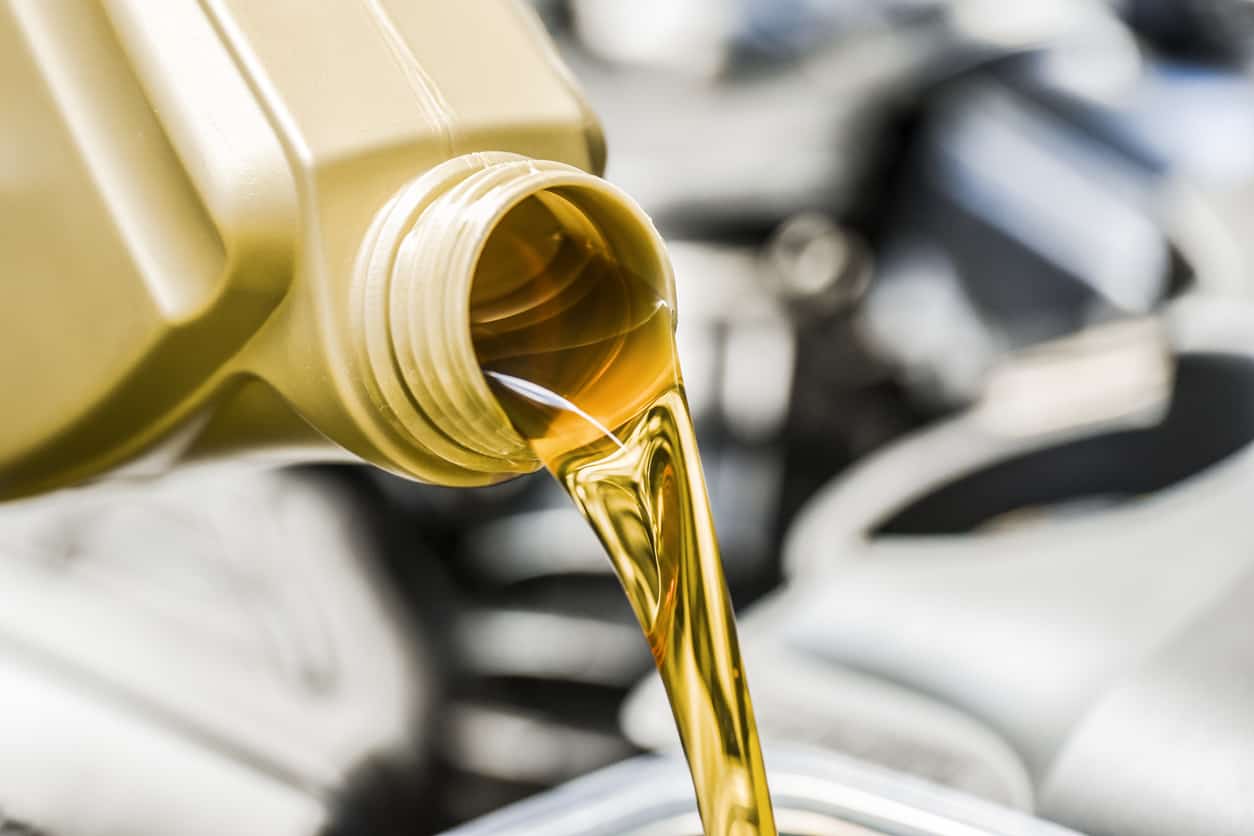Oil Viscosity
What is viscosity & why does it matter?

Most of us have only a vague understanding of viscosity. We tend to choose an oil with a viscosity that we believe is correct for our particular engine, but would another viscosity improve or reduce the life of the engine? Can we pick and choose a viscosity outside the manufacturer’s recommendations?
Technically, viscosity is defined as resistance to flow. Commonly, though, we think of it as an oil’s thickness. To be more specific, it is the thickness of oil at a given temperature. The plot thickens (ha!).
The viscosity of an oil could be reported at any temperature, but to standardize things, most laboratories report either a low temp (100F or 40C) or a high temp viscosity (212F or 100C) and stick with either Fahrenheit or Celsius. At Blackstone we report the high-temp viscosity, which is generally the temperature the engine is at while it’s running and the temperature at which the oil spends most of its time. We can do the low-temp viscosity too, if you’re interested, but the engine spends so little time running at the low-temp viscosity that it’s not a useful test for most people.
An apple is an apple, no matter what language you use to describe it. In the same respect, there are many ways to describe viscosity: engines use the SAE engine chart, industrial equipment mostly uses the ISO chart, gear oils use the SAE gear chart, etc. (Download your own viscosity chart here.) No matter what you call it, the number given defines the thickness of the oil at the standard high temperature.
Multi-grades explained
Engine oil can be either straight weight or a multi-grade viscosity. A major difference between the two is simply the addition of a VI additive, which allows the oil to maintain more or less the same flow rate regardless of its operating environment. Think of the difference between honey and water. Cold honey flows very slowly, but if you put it in the microwave and heat it up, it will flow much more easily. Water, on the other hand, flows at pretty much the same rate whether it’s hot or cold. That’s because water has a very narrow viscosity range, whereas honey’s is much wider. When it comes to engine oil, it naturally has a wide viscosity range, like honey, flowing slowly when it’s cold and faster when it’s hot. But we want it to act like it has a narrow viscosity range, like water, maintaining a fairly consistent flow rate regardless of whether the oil is cold or warm. That’s where viscosity improvers enter the picture. The VI additives in multi-grade oil help it move more easily through a cold engine upon start-up, but still provide cushion and lubrication when it’s hot.
Which viscosity to use?
People often ask us if it’s okay to use a different viscosity oil than what the manufacturer recommends. And typically, the answer is yes. Engine manufacturers dyno-test their engines using a specific viscosity oil, so when you use the viscosity they recommend, you are working with a known result. Going to another viscosity is an experiment, but it’s usually a harmless one. For the sake of efficiency, you want to run the lightest grade oil in your engine possible, within limits. If you’re racing, for example, that may require a thicker oil to stand up to the heat demands of more extreme use.
Over the last few years we have seen a trend of lighter oil for new engines. The common 10W/30 of a decade or two ago has become a 5W/30, 5W/20, or 0W/20. Many manufacturers use 5W/20 or 0W/20 oil at the factory (even in trucks) and recommend it for everyday use for many light vehicles. Feel free to try different grades until you find one that suits your particular situation.
Changes in viscosity
Lots of things can affect the viscosity. Adding anything foreign to your oil can change its viscosity — some types of aftermarket additives cause a high viscosity, and some solvent-type additives can cause the viscosity to thin out. Another thing that can change a viscosity is contamination. Moisture and fuel can change the viscosity, depending on the contaminant and how long it has been present in the oil. Excessive soot and antifreeze often increase an oil’s viscosity. Exposure to excessive heat (leaving the oil in place too long, engine overheating) can increase the viscosity of engine oil, though leaving ATF in place too long can cause it to get thinner, not thicker. Some engines will shear the viscosity down no matter what oil you use.
When your oil’s viscosity comes back as either lower or higher than the “Should Be” range, something is causing it. The key is to find out why and repair your engine or adjust your driving habits accordingly, and to correct the viscosity and optimize your engine’s efficiency. Test your oil while figuring out what to use. Your wear metals don’t lie!
Related articles
A New Wave
Saying goodbye to my 1984 Chevy
TBNs & TANs: Part 2
Determining how heat affects the TBN and TAN of the oil
Finishing the RV-12
The last article in our series on finishing the RV-12
In the Thick of it!
Five cities, five days, 5000+ cars: the 2024 Hot Rod Power Tour!









